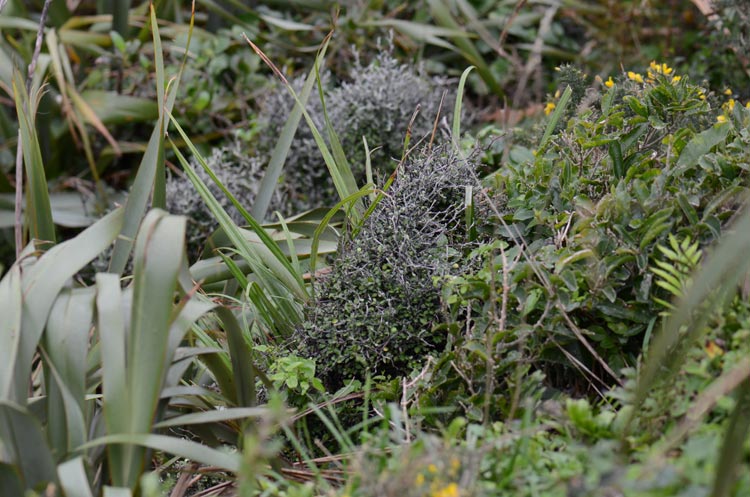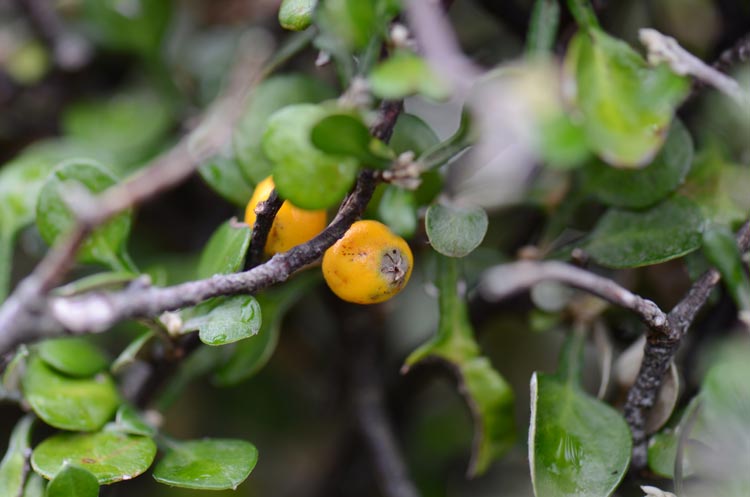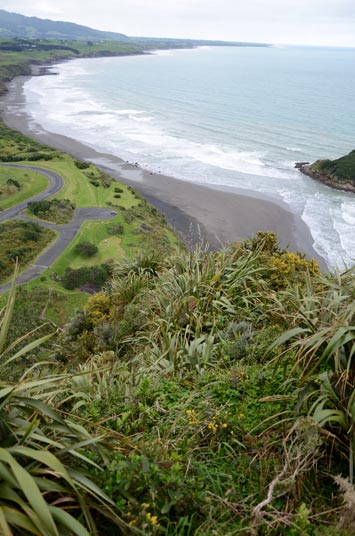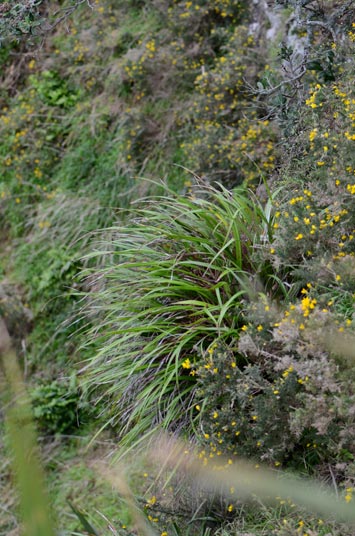A head for heights – Corokia cotoneaster ‘Paritutu’
Phillip Smith from O2 Landscapes shares his journal
Over the previous weekend, I made a trip to the Manawatu and Taranaki, in preparation for the next regional planting guide for Landscape Architecture NZ magazine. One of the Taranaki locals that I had come to see, Corokia cotoneaster ‘Paritutu’, emerges from the precipitous sides of a local landmark, Paritutu Rock.
The Paritutu korokio is a distinctive form of this widespread species, which differs from other C. cotoneaster populations by bearing comparatively large leaves, flowers and fruits. Another feature of this form is that the fruits are always yellowish-orange, and never red (unlike other areas of NZ, where C. cotoneaster can bear yellow, orange and red fruits within a single population).

Much of the information that I have learned about this interesting New Plymouth local has come from Bill Clarkson, a plantsman who plays an active role in promoting Taranaki’s special plants (and who shared some of his knowledge with me during this trip). Like so many other unusual variants of our native plants, the Paritutu korokio was recognised as a distinct form by Tony Druce – one of New Zealand’s great botanists who exhaustively explored many of our wild places.

It is recorded (within Eagle’s Trees and Shrubs, 2006) as growing in “small, widely scattered populations” along the North Island’s west coast, from Paritutu Rock (its southern limit) to Aotea Harbour (on the Waikato coastline).
We have noted the considerable variation exhibited within this species in many parts of the country, and we generally only use plants from our own distinctive, west Auckland populations in our Auckland gardens – with the exception of the creeping, North Cape form (which is a dynamic plant for the lowermost tiers of plantings). Another noteworthy member of the native plant communities on Paritutu Rock was Astelia solandri, which formed very attractive, compact clumps (see below, left) on the inland cliff faces.



